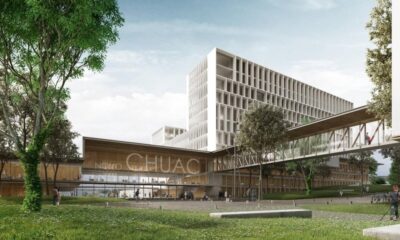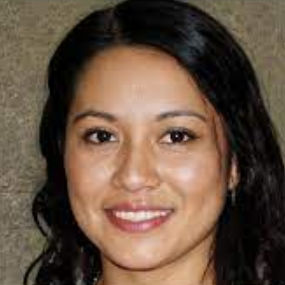Travel
Lost tribes, explosive volcanoes and pangolin hats: 2024’s most awe-inspiring travel photography
2024’s winning travel images include entries from photographers as young as nine-years-old.
Taking photos is a popular travel pastime, as we seek to capture moments and scenes so we can enjoy them long after the holiday is over. The collective enthusiasm for travel photography is breeding a wealth of talent, creating mesmerising images that highlight the beauty and diversity of our planet.
According to research by Virgin Media O2, most of us spend an inordinate amount of time pointing the camera at ourselves. They found that, on average, holidaying people take around 14 selfies a day, with one in ten admitting to getting into risky predicaments for the perfect holiday snap.
Nevertheless, travel serves to inspire photographers, both professional and amateur. Thanks to the endeavours of talented creatives, we can enjoy a window into the world, experiencing exotic destinations and seeing life from a new angle with their unique blend of timing and composition.
The best of the best are revealed in the winning images for the 2024 Travel Photographer of the Year awards. This year, there really are some stunners in the crop.
For the second year in a row, talented American photographer Piper Mackay has scooped the top prize for her incredibly unusual photographs, which she shoots in infrared.
“So many images seen today are over-saturated, over-processed and even AI-generated,” says Travel Photographer of the Year (TPOTY) founder Chris Coe. “A ‘less is more’ approach is often far more effective.”
“Piper Mackay’s distinctive winning images illustrate this ‘less is more’ ideal well,” Chris continues. “The use of black and white, with a camera converted to shoot infrared (IR), allows us to absorb the details and atmosphere which good monochrome conveys so well”.
Mackay, posting on her blog, said the win had left her ‘speechless,’ commenting, “After more than 20 years of photographing across the African continent and focusing on infrared photography for the past decade, this honour means a great deal to me, especially because it represents both my wildlife and tribal images”.
Young photography talent on show
TPOTY not only recognises established professional travel photographers but also serves as a springboard for younger creatives trying to break into the industry.
Aged 14, Raymond Zhang has been taking photographs of his surroundings since he was just 10 years old. Inspired by the plight of birds in Shanghai whose habitats were being destroyed for development, he began using his camera to raise awareness and send a deeper message.
His winning images for Young Travel Photographer of the Year focus on a group of workers at a coal mine in Hami City, Xinjiang province, China.
The people he photographed have worked at the mine for many years, with some as long as four decades. But with the mine facing closure, their future was uncertain. Zhang notes that it was also Chinese New Year, and the men were still working hard instead of spending time with their families.
Leonardo Murray, just 12 years old, scooped the prize for ‘Young TPOTY 14 years and under’ for his stunning photographs of the undulating sand dunes in Namibia.
The youngest award winner was Jamie Smart from the UK. Aged nine years old, he submitted a beautiful collection of images of seabirds to claim runner-up in the under-14s category.
In the age 15-18 category, 17-year-old Maksymilian Paczkowski scored a win with a portfolio of images of wild birds in action. He says that he loves playing with light and shadow to create art and that photography, to him, is all about the story behind the shot and the patience it takes to capture a fleeting moment.
Capturing cultures to celebrate people
Mexican photographer Maricruz Sainz de Aja won in the ‘Faces, People, Cultures’ category with a series of images of the Wauga tribe from Papua New Guinea. Here, two Wauga elders stand together, adorned with intricate feathered headdresses and covered in black mud.
“Photography is a tool for connection and storytelling, and each photograph is a reflection of the world’s complexity and the emotions that bind us,” says Maricruz. “I am committed to preserving these stories and contributing to a global interest in culture, nature, and humanity.”
While Maricruz won the portfolio category, the winner of the ‘single image’ category was Partha Pratim Roy, a Singapore-based photographer originally from West Bengal, India. His photograph depicts an Indonesian horseman struggling to control his lively steed, captured in East Java.
In a new category for TPOTY this year, Rising Talent celebrates amateur photographers as well as those who have turned professional very recently. Sofia Brogi from Italy captured this haunting image of a young girl in Sarnath, India, to win one of the ten Rising Talent awards.
Explaining the image, Sofia says the girl is called Gunja and doesn’t know her surname or date of birth. She was homeless and begging under a tarpaulin when Sofia met her.
“Gunja, for me, is India: a symbol of the caste system and its scars,” explains Brogi. “She embodies the innocence of a child who doesn’t know her own birth date but knows how to express gratitude.”
Another Rising Talent winner was Kevin Hoare from the USA, whose photograph of a boy from the Suri tribe in Omo Valley, Ethiopia, captured the imagination of the judges.
Hoare explains that cattle represent wealth and status in the Suri community and are constantly monitored, often with armed guards. This little boy, he says, is “following in his father’s footsteps.”
While all other categories are judged by an anonymous panel of 15 experts, there is one category the judges don’t get a say in. The People’s Choice award is decided by a public vote, and this year the winner was Mauro de Bettio from Italy.
De Bettio’s image displays a wonderfully close relationship between an endangered pangolin and the man who rescued it from a wildlife market in Nigeria, West Africa.
Photographing the power, beauty and terror of nature
Travel photographers give us a unique window into the world, and this year’s TPOTY winners have shone a light on both the beauty and the heartbreak of the natural environment.
Winning in the Planet Earth category, Roie Galitz submitted a portfolio of captivating images of glacier fronts in Bråsvellbreen, Svalbard. Capturing meltwater cascading down the sheer ice wall of the glacier illustrates the profound impact of climate change on the polar regions and their contribution to sea level rise.
Continuing that theme, Alain Schroeder from Belgium won in the Planet Earth category for the best single image with this shot of a young child looking out at the flooded streets of Jeruksari near Pekalongan, Indonesia. This visual captures the tangible consequence of climate change in all its raw glory.
One of the Rising Talent winners, Gilberto Costa from Portugal captured a stunning image of an erupting volcano in Antigua, Guatemala. He noted that this shot required much patience, spending a night on a cold and windy adjacent mountain waiting for the perfect moment.
Agnieszka Wieczorek from Poland also won in the Rising Talent category for his capture of volcanic activity. The Fagradasfjall eruption in Iceland that began in 2021 has drawn huge numbers of visitors, as the slow-moving lava and relatively accessible site allowed people to get up close in a safe manner.
Winning the Escape category, Ngar Shun Victor Wong from Hong Kong submitted this almost fantastical scene shot in Sveti Tomaz, Slovenia. The quaint church peeping out of a snowy scene shrouded in mist captures the timeless beauty of nature and architecture in a dreamlike image.
A window into the world of animal lives
No travel photography awards would be complete without a bit of wildlife, and this year’s TPOTY awards did not disappoint.
Winner of the best single image in Wildlife and Nature was Joshua Holoko from Australia, who snapped this amazing image of a Pallas cat in the Steppe region of Eastern Mongolia. Lying in the snow and covered in hoar frost, the cat is well camouflaged while it rests after a busy night hunting.
Scooping a highly commended in the nature category for his portfolio, Scott Portelli from Australia submitted this incredible photograph of a group of Adelie penguin chicks hiding from predators in a tunnel in an iceberg.
The winner in the portfolio category for ‘nature shots’ was Jenny Stock from the UK, who travelled to Jardines de la Reina, Cuba, for this beautiful photograph of a crocodile. From above, its prey would see nothing but its eyes popping out above the surface – while its powerful body hangs below the water, hidden from view.
Honoured in the Rising Talent awards, Dmytro Geshengorin was lucky to capture this amazing image of a pheasant taking off next to a roe deer in Minden, Germany. He had been lying on the ground, waiting for the deer to look his way, when the bird suddenly flew across its path.
Underwater photography was featured too. Khaichuin Sim from Malaysia grabbed one of the Rising Talent awards for his sub-aqua portfolio. Here, his freediving wife is surrounded by a huge school of jackfish off the coast of Sipadan Island, Malaysia.
There are dozens more stunning travel photography images to enjoy on the Travel Photographer of the Year (TPOTY) website. The winning shots will go on display at the Banbury Museum and Galleries in the UK from 29 March to 7 July, while exhibitions are also planned in the UAE and China later in the year.
Next time you’re on your travels, shun the selfie in favour of the world around you. Seek to capture a moment in time as only you can see it and, you never know, you could be one of next year’s winners.
Travel
Selfie zones and mobility scooter fines: The weirdest crackdowns on tourist behaviour in 2025
ADVERTISEMENT
The summer of 2024 was a tipping point for many destinations in Europe, as soaring visitor numbers caused tourism to become a burden rather than a benefit.
With mass tourism showing no signs of slowing in 2025, many hotspots have brought in measures to mitigate its negative effects.
Some moves seemed obvious: limiting cruise ships, increasing tourist taxes and capping visitor numbers.
But other efforts to curb visitor numbers have made headlines thanks to outside-the-box thinking from both officials and residents.
Here are some of the strangest overtourism measures that have been brought in so far this year.
Notting Hill residents paint iconic coloured houses black
Notting Hill, a neighbourhood in West London, first gained tourist fame in the 90s thanks to the eponymous romantic film starring Julia Roberts and Hugh Grant.
More recently, its photogenic, candy-coloured houses have made the area a social media darling.
But the crowds of snap-happy tourists have begun to frustrate residents, who are raising complaints about litter, noise and a lack of privacy.
Locals report incidents of influencers walking up to front doors to take pictures, setting out picnics, and even asking one homeowner to go inside so as not to ruin a photo.
Now, some residents have resorted to painting their houses in less eye-catching hues like black and grey to deter the cameras.
Homeowners have also erected ‘quiet zone’ signs and hung chains and ropes in front of the stairs leading up to their front doors.
Police check hikers’ footwear in Italy’s Cinque Terre
Italy’s Cinque Terre is famous for its sunny-coloured, cliff-clinging villages linked by vertiginous walking paths.
The hiking routes draw thousands of visitors in spring and summer, to the extent that the Cinque Terre national park authorities have had to introduce safety measures.
As well as introducing one-way systems, park authorities brought in a ban on open or smooth-soled footwear (like flip-flops) in 2019.
Inappropriate shoes can cost a would-be hiker a fine ranging from €50 to €2,500.
In the latest online guidelines for visiting the park, officials now say checks will be carried out by police to ensure walkers are properly kitted out.
Barcelona creates special selfie zone at Sagrada Familia
Until recently, Plaça Gaudí, the square in front of the Sagrada Familia church, had been exploited by tourists for a TikTok trend that caused considerable disruption.
It involved visitors balancing their phones on metro escalators to film themselves while the iconic monument appeared in the background. The trend led to tourists clogging station exits and was eventually banned.
Barcelona city council has now decided to construct a special zone beside the Sagrada Familia where visitors can take a breather – and a selfie – before entering the church.
The 6,200-square-metre ‘anteroom’ will be located between the Nativity façade of the basilica and Plaça Gaudí on Carrer de la Marina.
Benidorm cracks down on renting mobility scooters
In the Spanish resort town of Benidorm, authorities have announced hefty fines for the inappropriate use of mobility scooters.
Police say tourists have been renting the vehicles for fun and without proper insurance, and driving around at dangerous speeds.
The council has now emphasised that the use of mobility scooters is strictly limited to those with a genuine need.
Visitors violating the rules face fines of up to €500.
Travel
New Eurostar services will whisk passengers from the UK to cities in Germany and Switzerland
Published on
ADVERTISEMENT
Europe’s rail renaissance is showing no signs of slowing as high-speed rail operator Eurostar reveals ambitious plans to expand its network.
The company says it will introduce direct train connections from London to Germany and Switzerland, in what it calls the dawn of a “new golden age of international sustainable travel”.
The operator is also enhancing its existing offering by increasing services on popular routes.
Here’s what travellers can look forward to.
Eurostar’s proposed expansion includes establishing direct rail links between London St Pancras International and two key European destinations: Frankfurt in Germany and Geneva in Switzerland.
The company plans to invest approximately €2 billion to acquire a substantial fleet of up to 50 new trains for the routes.
These new services are expected to begin operating during the early 2030s and aim to rival air travel for the same trips.
And journey times make the rail alternative attractive. Passengers travelling between London and Frankfurt can expect to arrive in approximately five hours, while those heading to Geneva will make the journey in around five hours and 20 minutes.
Eurostar has not yet released details on intermediate stops and whether passengers will have the flexibility to get on and off at various points along the route.
The new services are particularly aimed at business travel, with Eurostar’s Chief Executive, Gwendoline Cazenave, highlighting that the destinations are “big financial hubs”.
Frankfurt and Geneva are also tourist hotspots, filled with culture, striking architecture and international events.
Dates for the launch remain approximate as there are still several logistical challenges to implementing these new routes.
These include expanding passenger facilities at destination stations, establishing new border control checkpoints, and securing track access agreements.
Despite these hurdles, Cazenave remains optimistic about the project’s success, citing strong commitment from Eurostar, passenger demand, and government support.
Eurostar to increase services along popular routes
Eurostar’s expanded fleet will also enable it to increase frequency on popular routes.
This includes boosting daily return services between London and Paris from 17 to 20.
The company has also confirmed plans to introduce a fourth daily return service between St Pancras and Amsterdam beginning on 9 September, with a fifth service added from mid-December.
Currently, Eurostar operates services connecting London to Paris, Brussels, Amsterdam, and seasonal routes to the French Alps during the winter sports season. It also runs train links within Belgium, France, Germany and the Netherlands.
The operator transported 19.5 million passengers last year – a five per cent increase from 18.6 million in 2023. The London-Paris route proved most popular with 280,000 passengers, followed by London-Brussels with 250,000 passengers.
While Eurostar currently enjoys a monopoly on passenger services through the Channel Tunnel, several competitors are developing plans to challenge this, including Virgin Group, Italy’s FS Italiane Group, and Gemini Trains.
Travel
Norway to introduce tourist tax amid record visitor numbers and overtourism concerns
By Euronews Travel
Published on
ADVERTISEMENT
Norway is set to become the latest European destination to introduce a tourist tax to combat concerns about rising visitor numbers.
Lawmakers approved the new levy on Thursday, which allows municipalities to introduce a 3 per cent tax on overnight stays in “areas particularly affected by tourism”.
The law allows local authorities to apply the tax at their own discretion, and it will be added to accommodation charges. Authorities will also be allowed to adjust the percentage based on the season.
The funds raised by the tax will be used exclusively to improve tourism infrastructure projects that benefit both visitors and local people. Municipalities will have to demonstrate that their facilities are inadequate and have their plans approved by the government to spend the funds.
Cecilie Myrseth, Norway’s minister of trade and industry, said on social media that her government had reached a “historic agreement” to introduce a tourism tax that was “in line with what they have in the rest of Europe”.
The country is the latest in a string of European nations introducing or increasing visitor levies to tackle the growing problem of overtourism. A tax may also be applied to cruise ships that make stops in the country, particularly in areas that are most affected by overtourism.
Norway is experiencing a tourism boom
As tourists increasingly choose cooler, northern European destinations to get away from the heat, Norway has experienced a boom in visitor numbers.
Last year, a record-breaking 38.6 million people booked accommodation in the country. That includes more than 12 million overnight stays by foreign tourists – a 4.2 per cent increase from 2023.
Some previously quiet destinations have been overwhelmed, like the Lofoten islands, where eye-catching images of hiking trails posted on social media have led to an influx of visitors. With a population of 24,500 people distributed across several small towns and villages, keeping up with the cost of all these new visitors has been hard.
A recent survey by industry organisation Norwegian Tourism Partners found that 77 per cent of people in Tromsø, in northern Norway above the Arctic Circle, thought there were too many tourists there. Visitors have been drawn by the Northern Lights, wildlife excursions, Sami cultural experiences and what the city itself has to offer.
The increase in tourism has caused tension with local residents across Norway as infrastructure has struggled to keep up with the boom. Facilities like public toilets and car parks have been overwhelmed in popular destinations.
Some residents have even reported cases of people using their back gardens as toilets, and bemoaned the increased traffic clogging up Norway’s roads.
-

 Sports7 days ago
Sports7 days agoMarc Marquez wants to make no more mistakes and heralds news
-
Travel6 days ago
Norway to introduce tourist tax amid record visitor numbers and overtourism concerns
-

 Politics6 days ago
Politics6 days agoGalician healthcare system receives nearly €510 million in EU support for its modernisation
-

 Politics6 days ago
Politics6 days agoEYE2025 (European Youth Event): thousands to celebrate the power of democracy | News
-

 Politics6 days ago
Politics6 days agoNew plan will help EU countries tackle cyber-attacks better
-

 Politics5 days ago
Politics5 days agoEl Salvador: Statement by the Spokesperson on the Foreign Agents Law and recent developments
-

 Sports7 days ago
Sports7 days agoMarc Marquez no longer wants to make mistakes and heralds change
-

 EU & the World5 days ago
EU & the World5 days agoNovak Djokovic’s Wife: All About His Romance With Jelena Djokovic









